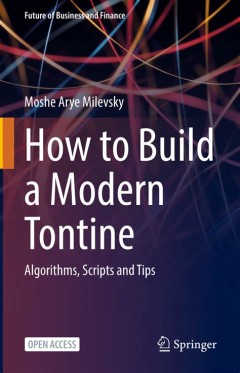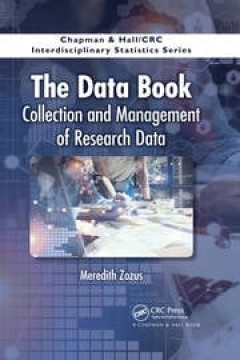Filter by

How to Build a Modern Tontine : Algorithms, Scripts and Tips
This open access book introduces the modern tontine and its applications in retirement and decumulation. Personal financial management in the later stages of life presents unique challenges, and renowned retirement planning expert Dr. Milevsky proposes the modern tontine as a solution. With the goal of guiding professionals and retirees in more efficient decumulation, the book demonstrates how …
- Edition
- 1
- ISBN/ISSN
- 9783031009280
- Collation
- XXI, 156 hlm; ill., lamp.,
- Series Title
- -
- Call Number
- -

Innovative Learning Environments in STEM Higher Education : Opportunities, Ch…
As explored in this open access book, higher education in STEM fields is influenced by many factors, including education research, government and school policies, financial considerations, technology limitations, and acceptance of innovations by faculty and students. In 2018, Drs. Ryoo and Winkelmann explored the opportunities, challenges, and future research initiatives of innovative learning …
- Edition
- -
- ISBN/ISSN
- 978-3-030-58948-6
- Collation
- XV, 137
- Series Title
- SpringerBriefs in Statistics (BRIEFSSTATIST)
- Call Number
- 300 INN

How to Build a Modern Tontine
This open access book introduces the modern tontine and its applications in retirement and decumulation. Personal financial management in the later stages of life presents unique challenges, and renowned retirement planning expert Dr. Milevsky proposes the modern tontine as a solution. With the goal of guiding professionals and retirees in more efficient decumulation, the book demonstrates how …
- Edition
- 1
- ISBN/ISSN
- 978-3-031-00928-0
- Collation
- -
- Series Title
- Future of Business and Finance
- Call Number
- XXI, 156

Understanding the Analytic Hierarchy Process
The aim of this book is to provide the reader with a critical guide to AHP. In this book, the AHP method is considered primarily as a mathematical technique supporting the decision-making process. This method provides a convenient and versatile framework for modelling multi-criteria decision problems, evaluating alternatives and deriving final priorities. Rather than imposing a correct decision…
- Edition
- -
- ISBN/ISSN
- 9781315392226
- Collation
- -
- Series Title
- -
- Call Number
- -

Gauge Theories in Particle Physics: A Practical Introduction, Fourth Edition …
The fourth edition of this well-established, highly regarded two-volume set continues to provide a fundamental introduction to advanced particle physics while incorporating substantial new experimental results, especially in the areas of CP violation and neutrino oscillations. It offers an accessible and practical introduction to the three gauge theories included in the Standard Model of partic…
- Edition
- -
- ISBN/ISSN
- 9781315275253
- Collation
- -
- Series Title
- -
- Call Number
- -

Principles of Fourier Analysis
- Edition
- -
- ISBN/ISSN
- 9781315181493
- Collation
- -
- Series Title
- -
- Call Number
- -
- Edition
- -
- ISBN/ISSN
- 9781315181493
- Collation
- -
- Series Title
- -
- Call Number
- -

The Data Book: Collection and Management of Research Data
The Data Book: Collection and Management of Research Data is the first practical book written for researchers and research team members covering how to collect and manage data for research. The book covers basic types of data and fundamentals of how data grow, move and change over time. Focusing on pre-publication data collection and handling, the text illustrates use of these key concepts to m…
- Edition
- -
- ISBN/ISSN
- 9781315151694
- Collation
- -
- Series Title
- -
- Call Number
- -

Spectral geometry of partial differential operators
ABSTRACT The aim of Spectral Geometry of Partial Differential Operators is to provide a basic and self-contained introduction to the ideas underpinning spectral geometric inequalities arising in the theory of partial differential equations. Historically, one of the first inequalities of the spectral geometry was the minimization problem of the first eigenvalue of the Dirichlet Laplacian. No…
- Edition
- -
- ISBN/ISSN
- 9780429432965
- Collation
- 378 p
- Series Title
- -
- Call Number
- -

Missing and Modified Data in Nonparametric Estimation
This book presents a systematic and unified approach for modern nonparametric treatment of missing and modified data via examples of density and hazard rate estimation, nonparametric regression, filtering signals, and time series analysis. All basic types of missing at random and not at random, biasing, truncation, censoring, and measurement errors are discussed, and their treatment is explaine…
- Edition
- -
- ISBN/ISSN
- -
- Collation
- -
- Series Title
- -
- Call Number
- -

An elementary transition to abstract mathematics
ABSTRACT An Elementary Transition to Abstract Mathematics will help students move from introductory courses to those where rigor and proof play a much greater role. The text is organized into five basic parts: the first looks back on selected topics from pre-calculus and calculus, treating them more rigorously, and it covers various proof techniques; the second part covers induction, sets, …
- Edition
- -
- ISBN/ISSN
- 9780429324819
- Collation
- 292 p
- Series Title
- -
- Call Number
- -
 Computer Science, Information & General Works
Computer Science, Information & General Works  Philosophy & Psychology
Philosophy & Psychology  Religion
Religion  Social Sciences
Social Sciences  Language
Language  Pure Science
Pure Science  Applied Sciences
Applied Sciences  Art & Recreation
Art & Recreation  Literature
Literature  History & Geography
History & Geography